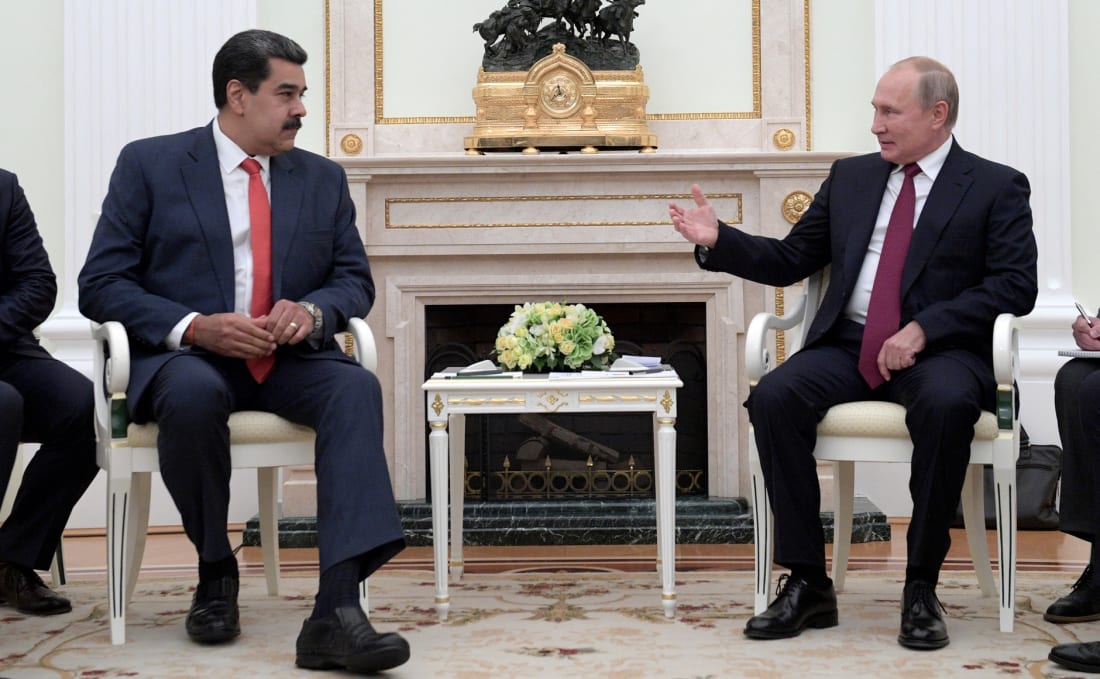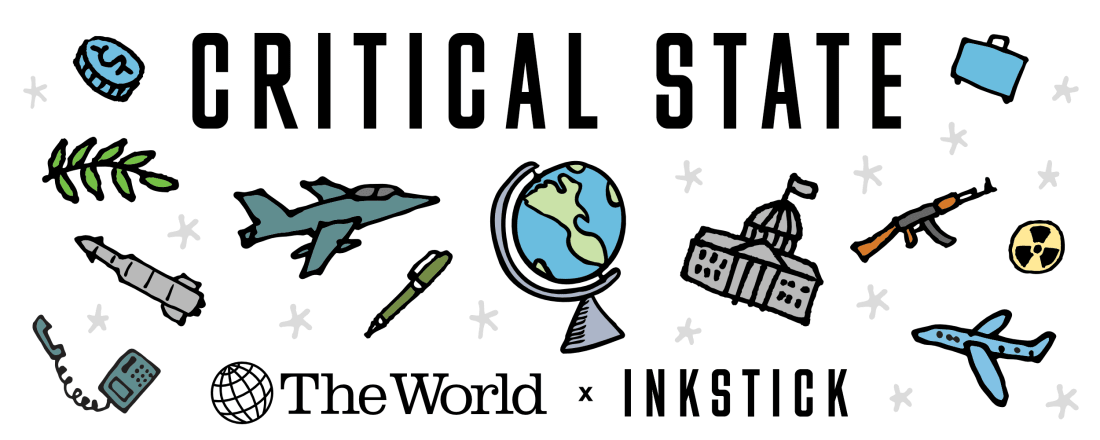|
Critical State: Blurred Lines Between Policing and the Military
If you read just one thing this week … read about US immigration enforcement's shift into a sprawling nationalized policing network.
At The Intercept, Akela Lacey detailed how President Donald Trump expanded federal immigration enforcement into a sprawling nationalized police network. Through revived 287(g) agreements, formal partnership between US Immigration and Customs Enforcement (ICE) and local or state law enforcement agencies, the administration incentivized local and state agencies — including wildlife, gaming, and university police — to partner with ICE.
They offered signing bonuses, loan forgiveness, and full salary reimbursement. Legal experts and civil rights advocates have warned that this strategy blurs lines between law enforcement and the military, enabling the Trump administration to consolidate power and deploy federal agents under Trump’s direct command.
A federal judge recently criticized the use of National Guard troops in cities like Los Angeles as unconstitutional overreach.
Despite claims of public safety, researchers found no evidence that these policies reduced crime. Instead, they fueled moral panic and harmed communities.
The article exposed how immigration enforcement became a gateway for authoritarian control, with dissent increasingly targeted under the guise of national security.
If You Read One More Thing: Democrats Retreat from AIPAC
For The New Republic, Perry Bacon reported that figures like Representative Seth Moulton have returned donations linked to AIPAC and pledged to reject future support, signaling a dramatic shift in Democratic politics.
Activists and media personalities pressed leaders — including Cory Booker, Gavin Newsom, and Kamala Harris — on Israel’s conduct in Gaza, framing questions about genocide and AIPAC ties as litmus tests.
Bacon traced this shift to four factors: rising progressive engagement post-October 2023, deepening ideological divides, the electoral success of Israel-skeptical candidates like Zohran Mamdani, and former President Joe Biden’s exit from the 2024 presidential race paving the way for more criticism of Israel.
While centrist Democrats struggled to balance donor expectations with activist demands, Bacon argued that skepticism toward AIPAC had become a proxy for broader party realignment.
Venezuela’s Russia-armed Forces Pose Threat, Should Washington Invade
 |
For Military.com, Allen Frazier examined how Venezuela’s deployment of Russian-supplied weaponry and heightened military readiness have raised alarms in US defense circles.
The article detailed how joint drills and radar installations near contested borders signaled a shift toward active deterrence, prompting the Pentagon to reassess force protection and regional alliances.
Russian involvement — through arms transfers and advisory support — has intensified concerns about proxy conflict dynamics.
Frazier wrote that US troops stationed in neighboring countries have faced increased surveillance and logistical challenges.
The piece underscored the geopolitical stakes of Venezuela’s militarization and the ripple effects on hemispheric stability, as Washington weighed diplomatic and tactical responses to avoid escalation.
Deep Dive: How Drones Have Redefined Surveillance in the AI Era
At the IEEE Access journal, a new systematic review entitled “The Rise of UAV-Based Smart Surveillance: A Systematic Review of Trends and Technologies,” examines the rapid evolution of unmanned aerial vehicles (UAVs) in surveillance, highlighting their growing role in both civilian and military domains.
The authors — Sudesh Kumar, Anshuman Tiwari, Yogesh Ahirwar, Gaurav Kumar, and Muhammad Yeasir Arafat — framed UAVs as “advanced aerial platform[s] that operate autonomously,” capable of executing missions “under operator control through distant commands or automatically through programmed software and artificial intelligence (AI).”
The review traced UAVs’ transformation from military reconnaissance tools into versatile assets for public safety, infrastructure monitoring, and disaster response. “UAVs serve as advanced instruments in various fields,” the authors wrote, “because they can effectively operate through rugged terrains and risky spots and execute tasks with high precision.” Their integration into smart cities, border control, and emergency management systems has made them “essential tools for modern surveillance systems.”
The paper’s methodology followed PRISMA guidelines, drawing from Scopus, IEEE Xplore, Web of Science, and Science Direct. From an initial pool of 170 articles published between January 2020 and March 2025, the authors screened and selected 97 for in-depth analysis. The review aimed to answer four core research questions, including: “What is the present market landscape of UAV-based surveillance?” and “What key challenges impact the deployment of UAV surveillance systems particularly the computational constraint on edge UAVs?”
The global UAV surveillance market was valued at $14.14 billion in 2023 and was projected to grow to $47.16 billion by 2032, “advancing at a compound annual growth rate (CAGR) of 13.15%.” The authors attributed this growth to “the rising need for cost-effective and scalable real-time monitoring solutions.” North America led the market with over 35% share, driven by “substantial defense expenditure, smart city initiatives, and strict security policies.” Meanwhile, Asia-Pacific nations like India and China were “implement[ing] UAVs for urban development, emergency management, and border protection.”
The review categorized UAVs into fixed-wing, rotor-wing, hybrid, lighter-than-air, and flapping-wing types. Fixed-wing UAVs offer “reliable operational capacity and extended operational range,” making them suitable for “agricultural mapping applications, border monitoring, and powerline inspection operations.” Rotor-wing UAVs, including single and multi-rotor designs, were praised for their “vertical take-off and landing (VTOL) capabilities” and “hovering ability,” though they suffered from “higher energy consumption.”
Hybrid UAVs combined the strengths of both fixed- and rotor-wing platforms. Tilt-rotor and quad-plane designs enabled “vertical take-off with long-range capability,” but introduced “mechanical complexity” and “higher cost.” Lighter-than-air UAVs, such as blimps and balloons, were “extremely quiet” and “cost-effective,” but struggled with “very slow” speeds and “sensitivity to wind.” Flapping-wing UAVs, or ornithopters, mimicked bird or insect flight and were “ideal for covert operations,” though limited by “complex mechanics” and “limited payload.”
Technological advancements were central to the review. Lightweight AI models running directly on drones allowed UAVs to “identify, classify, and respond in real time without transmitting raw video to the cloud.” This reduced “latency, bandwidth requirements, and mitigated privacy risks.” The integration of 5G, mesh networking, and low-latency radio links enabled “continuous telemetry, live analytics offloading, and multi-platform coordination.”
Sensor technologies also advanced rapidly. Compact, high-resolution payloads — including “electromagnetic (visible) and infrared (thermal) sensors, multispectral and hyperspectral cameras, light detection and ranging (LiDAR) modules, and long-range zoom optics” — were now available on commercial platforms like the DJI Enterprise series.
The review spotlighted several AI-driven surveillance models. UAV-AdNet used deep neural networks for “unsupervised anomaly detection,” while SiamAPN++ offered “a precise balance between tracking accuracy and computational speed.” Another system integrated YOLOv3-SPP with deep SORT for “effective multi-UAV tracking … appropriate for urban deployment.” The authors also highlighted a “vision transformer (ViT)” model that enhanced “tracking resilience in a variety of dynamic situations.”
Swarm coordination has emerged as a frontier challenge. A hybrid-AI architecture using deep reinforcement learning and a centralized mission planner enabled “coordinated, adaptive, and efficient” ground-target tracking. Meanwhile, the optical flow-assisted graph-pooling residual network (OF-GPRN) improved “UAV recognition in dual-vision surveillance systems,” especially during “difficult day-to-night transitions.”
Security was another focal point. A proposed quantum key distribution (QKD) mechanism for UAV-to-ground-station communication aimed to guarantee “that conversations are shielded from possible cyber threats and eavesdropping.”
The authors concluded that UAVs had become “essential components of current surveillance systems,” offering “real-time, high-resolution surveillance across challenging terrains.” However, they cautioned that issues of “privacy, security, and safe operation” remained unresolved, particularly in the context of drone swarms and autonomous decision-making.
By bridging academic research and industry practice, the review provided a roadmap for future innovation in “intelligent, reliable, and scalable UAV-based surveillance systems.”
Show Us the Receipts
For Inkstick, Tyler Hicks reported on the Trump administration’s rhetoric and how it emboldened ICE and DHS agents to target activists, immigrants, and progressive donors under the guise of counterterrorism. Legal experts warned that this strategy mirrored authoritarian tactics, branding political opposition as threats. Despite fear and arrests, local leaders and communities continued to push back. The piece was visually anchored by Mike Newbry’s photography, which captured the tension and resilience of those who resisted federal aggression.
In partnership with Floodlight, a nonprofit newsroom that investigates the powers stalling climate action, Inkstick published Ames Alexander’s report that shows despite mounting evidence of climate-related threats — from heat-related illness to hurricane damage — the Department of Defense has deprioritized environmental resilience. Internal documents reveal stalled adaptation plans and reduced funding, leaving installations vulnerable. Service members faced growing risks with limited support. The article underscored how political shifts undermined long-term climate preparedness.
At The World, Jason Strother reported that South Korea’s longstanding ban on non-medical tattooing faced potential reversal, prompting both hope and concern among artists. Many had operated in legal gray zones, risking fines or prosecution, while building vibrant subcultures. Some feared commercialization and loss of artistic integrity if regulations loosened. Others welcomed the chance for legitimacy and safer working conditions. The article highlighted the tension between tradition, legality, and evolving public attitudes toward body art.
Pitch Inkstick
Inkstick is on the lookout for US-related pitches. We’re especially interested in reported features and personal essays that examine issues like the weapons industry, the increasing militarization on the US-Mexico border and within the country, domestic extremism, and the people in power pushing for more wars abroad.
Support Inkstick, Get Merch
Democracy might be dying, but you can still support independent journalism. Inkstick now offers merch: hats, T-shirts, sweatshirts, hoodies, coffee mugs, and just about whatever else you’d want. Check it out here.
Critical State is written by Inkstick Media in collaboration with The World.
The World is a weekday public radio show and podcast on global issues, news, and insights from PRX and GBH.
With an online magazine and podcast featuring a diversity of expert voices, Inkstick Media is “foreign policy for the rest of us.”
Critical State is made possible in part by the Carnegie Corporation of New York.
You're currently a free subscriber to Inkstick’s Substack. For the full experience, upgrade your subscription.
